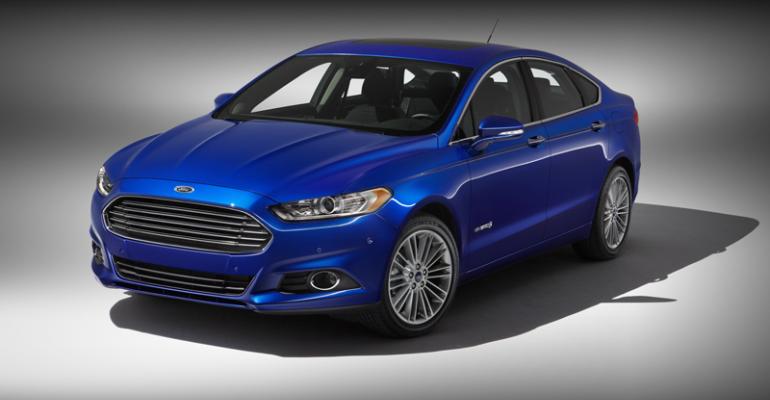DETROIT – Ford is standing firm on its hybrid-vehicle fuel-economy ratings and says it is working with the Environmental Protection Agency to determine if changes are needed in the hybrid fuel-economy test cycle, following a scathing article by Consumer Reports.
The influential magazine earlier this month reported that in its testing the all-new ’13 C-Max and Fusion hybrids failed to achieve by a wide margin their claimed 47 mpg (5.0 L 100/km) city/highway ratings.
Consumer Reports said it averaged only 39 mpg (6.0 L/100 km) in the Fusion and just 37 mpg (6.3 L/100 km) in the C-Max.
During a North American International Auto Show preview here today, Raj Nair, vice president of engineering-global product development, says hybrid fuel economy can be impacted by a number of factors that don’t affect traditional gasoline-powered vehicles, including ambient temperature, speed and the break-in period.
Nair says driving 75 mph (120 km/h) vs. 65 mph (104 km/h) can shave 7 mpg (2.9 km/L) off a hybrid’s fuel economy, while temperature variation between 70° F (21° C) and 50° F (10° C) adds up to a 5 mpg (2.1 km/L) difference.
There can be another 5 mpg difference between a vehicle with zero miles on its odometer compared with one that has gone through a 6,000-mile (9,656-km) break-in period, he says.
“So that all adds up to a 17 mpg (7.2 km/L) difference,” Nair says. “We agree with the EPA that hybrids are far more variable in the test cycle, so we’re working closely with them to determine if changes are needed for the industry relative to hybrid-vehicle testing.”
Ford hybrid buyers have reported regularly achieving 47 mpg, while some have recorded up to 55 mpg (4.2 L/100 km), he says.
Using the onboard driving aids that show how to maximize mileage is critical in achieving the highest fuel economy, Nair says.
Some competing-brand hybrids have been detuned to maximize fuel economy and lessen the chance of customers failing to achieve maximum mileage, he adds.
“We’ve designed our hybrids to drive exactly the same way as all our other vehicles. We could have detuned the vehicles like some of our competitors have done.”
In a follow-up statement released yesterday, Consumer Reports softened its stance on the Ford hybrid mileage, noting the EPA test procedure varies from its own.
“In the Consumer Reports highway test, we record the average fuel usage in two directions at a steady 65 mph on a specific section of highway,” the statement says. “In contrast, the majority of the EPA highway cycle simulates a vehicle traveling mostly at speeds below 55 mph (88 km/h). Although the EPA tests reach 80 mph (128 km/h) at times, the highway tests include a fair amount of gentle acceleration and coasting.
EPA test speeds “average only about 48 mph (77 km/h),” Consumer Reports says. “Under these conditions, Ford’s hybrid drive allows the gasoline engine to completely shut off at times, with the resultant increase in fuel economy.”
Joe Hinrichs, who recently replaced Mark Fields as president-The Americas, says the fuel-economy controversy has not adversely impacted sales of the Fusion and C-Max hybrids.
The’13 Fusion and C-Max hybrids recorded sales of 3,688 and 7,596, units, respectively, through November, according to WardsAuto data.
“We’re excited about the hybrids and how good they’re doing in the marketplace,” he says.
Hinrichs also expresses confidence a software fix to the 1.6L direct-injection turbocharged EcoBoost 4-cyl. in the ’13 Fusion and Escape will address an overheating issue that has caused engine fires in some vehicles.
The auto maker plans to make software updates to the cooling system of the 1.6L mill available in SE and SEL models of both vehicles.
Ford says the updates will better manage engine temperatures during a unique overheating condition that could occur. The original cooling system was not designed to address a loss of coolant-system pressure under certain operating conditions.
To date, Ford has recalled some 73,000 Escapes and 15,800 Fusions.
“I’m confident about the fix,” Hinrichs says. “We did testing and we’re confident the software will fix the issue, and we’re excited about new Escape and Fusion. They’re both doing very well in the market place.”





